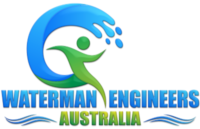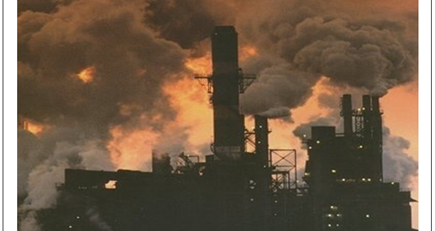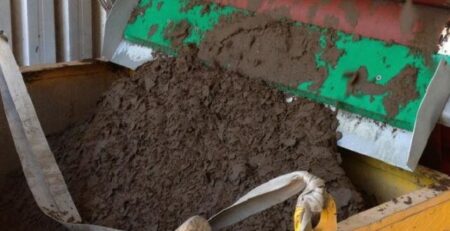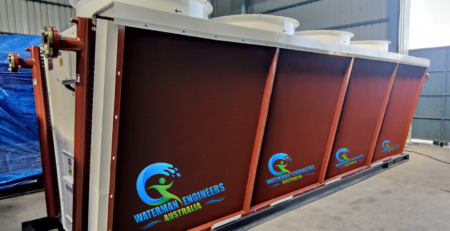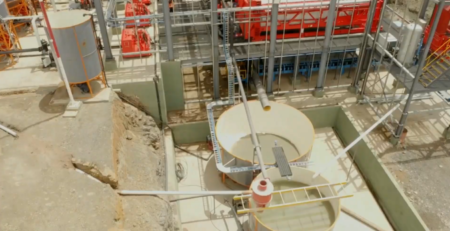Indonesian Market for Zero Liquid Discharge Systems
There are several reasons to invest in zero liquid discharge systems. These reasons include the fact that it has an environmentally friendly advantage and is a cost-effective method to clean water. Its adoption is growing rapidly in the Asia-Pacific region. This has led to a number of benefits including a reduction in the use of harmful chemicals, improved health and safety, and increased productivity. In addition, the demand from the developing economies is also boosting the market.
Why Asia Pacific is the Fastest-Growing Region for the Global Zero Liquid Discharge Systems Market?
The Zero Liquid Discharge (ZLD) systems market is expected to show significant growth over the coming years. It is expected to reach a total revenue of US$ 2,061.2 Mn by 2033. The growth will be driven by the rapidly growing energy and power sector. These industries are among the largest producers of wastewater. Moreover, they also generate complex waste that is very difficult to treat. Therefore, they need effective systems to dispose of pollutants. The application of ZLD systems in such sectors will boost the global Zero Liquid Discharge (ZLD) market.
The Asia Pacific region will be the leading region in the zero liquid discharge systems market. The region is home to some of the world’s fastest-growing economies. These include China and India. These two countries have made several government regulations aimed at reducing water pollution. These regulations will encourage more and more industries to adopt zero liquid discharge systems. This will help them conserve and reuse water to minimize the environmental risks associated with the process.
The energy and power industry will be the biggest segment in the zero liquid discharge market. This is due to the fact that thermal power plants are the major generators of wastewater. Hence, the growing number of thermal power plants is driving the need for zero liquid discharge technology.
The food and beverage industry are another key demand-generating segment. This sector will continue to grow owing to the increase in population. The rapid industrialization is also resulting in higher demands for energy and food. The depletion of natural resources is also a driving factor for the zero liquid discharge market.
Despite the rising concern about the impact of zero liquid discharge systems on the environment, the market will still see strong demand. Some of the applications of zero liquid discharge technology include coal-to-chemical plants, oil and gas, pharmaceuticals, and food & beverage. The use of hybrid ZLD systems is also expected to increase. These are used to treat large concentrations of chemicals in effluents. These systems work by converting dissolved solids into solids through a process called crystallization. The crystallizer then evaporates the remaining water.
How Popular are Zero Liquid Discharge Systems in Developing Economies?
A growing population and industrialization are driving the global demand for Zero Liquid Discharge Systems. Several government authorities have mandated a variety of measures to promote the use of systems that recycle wastewater and recover by-products from waste.
These systems enable industries to maximize the efficiency of their water usage. They also reduce the use of freshwater resources and eliminate the potential pollution of wastewater discharge. In addition, they also help in productive utilization of captured wastes.
The application of zero liquid discharge is mainly found in the industrial sector. In fact, it is also used in the mining industry to get rid of different pollutants. There are various challenges involved in using these systems.
Increasing urbanization and a rising population have led to an increase in the world’s need for energy. This has been accompanied by rapid industrialization in developing countries. This has also resulted in a shortage of fresh water. However, the demand for energy is expected to grow at a rapid pace in the coming years.
In China, the 12th Five-Year Plan has included objectives to enhance the country’s environmental protection. It has mandated the installation of ZLD in coal-to-chemical refining facilities, as well as in food and beverage, pharmaceutical, and textile industries.
The application of Zero Liquid Discharge in the energy and power sector is predicted to be the largest contributor to market growth. Power plants produce large amounts of wastewater. It is difficult to treat and reuse this wastewater. A growing demand for alternative sources of water is also expected to drive the market.
Cost-effectiveness of the Zero Liquid Discharge System Technology
Zero Liquid Discharge systems are water treatment technologies that purify wastewater from a variety of industries. They reduce the cost of disposal of industrial wastewater, recover valuable materials, and minimize the environmental impact of wastewater.
In order to ensure that a system’s waste is treated in a safe and efficient manner, the design of the system must be site specific. This includes factors such as the composition of the wastewater, the number of streams to be treated, and the availability of foot-print space.
In recent years, there has been a growing focus on zero liquid discharge technologies. These systems have become essential components of a variety of industrial sectors. They are implemented in power plants, oil and gas refineries, and chemical and petrochemical industries.
The global market for zero liquid discharge systems is expected to grow at a significant rate over the next five years. This growth is attributed to increasing demand for cleaner energy, and strict regulations and environmental laws. It is also due to technological advancements.
The ZLD market is divided into conventional and hybrid ZLD systems. In the former, thermal technologies are used to treat large amounts of chemicals in effluents. The process includes pre-treatment, evaporation, and filtration. The latter uses membrane-based technologies, which are less capital intensive.
The ZLD market is projected to expand at a high rate in the coming years, driven by increasing concern about the environmental impact of waste water discharges. It is also aided by the growing number of companies that are implementing water discharge reduction initiatives.
The rising number of industrialization and population growth in developing nations are also boosting the market. As these regions face a severe shortage of fresh water, the need for water-saving technology is on the rise.
Environmental Impact of the ZLD Systems Technology
Zero Liquid Discharge (ZLD) systems use a series of advanced treatment processes to reduce the volume of wastewater and produce solids for disposal. The system can involve separation, heating, evaporation, or decanting. It can also involve the reuse of produced solids.
Optimal design requires careful consideration of the waste water chemistry and environmental impact. It is important to consider all costs before implementing a ZLD system. A well-designed ZLD can reduce the quantity of liquid waste generated by 80 percent.
The key to reducing the volume of wastewater is to choose the correct equipment. The system can include the application of ultrafiltration (UF) to decrease turbidity. Another option is the application of a deep well injection.
Compared to the traditional thermal processes, the ZLD technology is cheaper. It can be applied to a variety of industries including oil & gas, mining, and power. In many cases, these facilities will send their liquid waste off-site for treatment.
The systems are cost-effective. This is especially true in developing countries. The costs may be offset by the reduced emissions from greenhouse gases.
Zero Liquid Discharge systems have been adopted in countries such as China, which have seen a rise in air pollution. These systems are becoming more efficient and effective. In fact, the application of these technologies will play a key role in meeting the growing global demand for fresh water.
Competitive Landscape of Zero Liquid Discharge Systems
The zero liquid discharge market has witnessed growth due to increased usage of water and a demand for more efficient methods of wastewater treatment. Rising industrialization and increasing pollution are also factors driving the industry. As a result, stringent regulations are being implemented in many regions to ensure water sustainability.
The industry is segmented by type, end-use industry, process, and geographic region. Each segment is analyzed on the basis of product, application, technology, market share, and price.
Among all regions, North America leads the zero liquid discharge systems market. In fact, this region is expected to account for the largest share of the global market during the forecast period. The reason for this is the high population and rapid urbanization.
Asia Pacific, on the other hand, is expected to be the fastest-growing region in the coming years. This is because of growing industrialization, growing demand for food, and an increase in the demand for power. However, this region is facing a significant challenge due to the shortage of fresh water. In response, several government authorities have adopted regulatory changes to encourage water efficiency.
In addition, China is expected to be a major market for zero liquid discharge systems. In order to achieve water sustainability, Chinese governments have made several government regulations to implement water treatment techniques. This has resulted in major investment in the water and wastewater management industry.
In Conclusion
Zero Liquid Discharge (ZLD) Systems are a type of water treatment equipment used in industries that need a cost-effective method for treating wastewater. These processes reduce the need for water discharge, recover expensive by-products, and improve the efficiency of the water used in industries. In addition, ZLD systems enable wastewater reuse. This minimizes the environmental risks associated with waste discharge.
